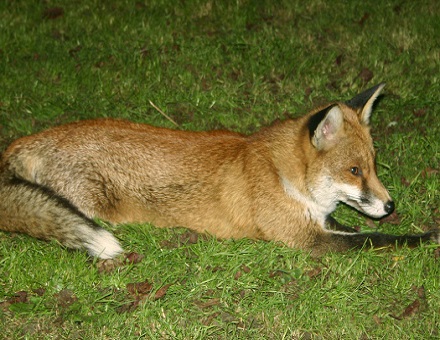Wildlife in urban areas

There has been much talk recently about reshaping town and city centres. There have even been suggestions for creating open spaces and wildlife areas.
See our post Turning shopping centres into parkland (Feb 2021) – click here
Surely wildlife belongs in the countryside, rather than urban areas?
It certainly used to.
After the war, the Government offered grants to farmers to increase efficiency. As a result, thousands of miles of hedgerows were grubbed up to create larger more efficient fields.Hedgerows are the highways and homes for many species. Remaining hedgerows are often affected by chemical spraying.
Traditional orchards – sparsely planted and used for grazing sheep after the harvest – also used to be plentiful and provided a sanctuary for fauna and flora.
Do urban areas have enough space for wildlife?
In fact “natural land cover”, which includes parks, playing fields, allotments, golf courses, verges and railways embankments, as well as wasteland – covers 30% of urban areas, and if private gardens are added that figure reaches 55% (2018 figure).
In recent years the water quality has improved in many rivers and canals, which has also attracted wildlife back into urban areas, including ducks, moorhens, swans and geese as well as fish and insects.
Network Rail has around 130,000 acres of land by railway tracks and sidings, as well as bridges and tunnels that can be used by wildlife. It now has teams of environmentalists who identify wildlife on sections of track, so that planned maintenance can be undertaken outside of breeding seasons.
Land by railways form wildlife corridors, largely undisturbed by humans.
One urban success story has been the Peregrine Falcon. Numbers in rural areas declined sharply from the 1950’s mainly because of the use of pesticides on farms. Many were illegally killed to protect game birds and racing pigeons.
Now the population is on the increase as churches and high rise buildings are ideal nesting sites. Cathedrals including Durham, Derby and Salisbury are among the many nesting sites used, as well as other tall buildings including Birmingham’s BT Tower and Nottingham Trent University..
Pigeons provide a plentiful food supply and there is even evidence that Peregrine Falcons have adapted their behaviour to their new environment, using city lights to hunt after dark. In rural areas they mostly hunt around dawn and dusk.
Many species are attracted to urban areas because of the lack of predators and the availability of discarded food. Many species who are not fussy eaters are able to live in towns and cities including pigeons, magpies and foxes.
Research suggests that more than half of British homeowners feed wild birds, while garden ponds can also attract wildlife.
The decline in the number of hedgehogs has been steeper in rural areas than in towns and cities. Many people are trying to attract them to their gardens and creating “hedgehog highways”.
See our post Hedgehogs in the garden (March 2021 – click here
I am able to see squirrels from my home close to a city centre, living around a cluster of trees. Trees in city streets are also important to wildlife.
There is even a plan to reintroduce otters to the Tottenham area of north London!

